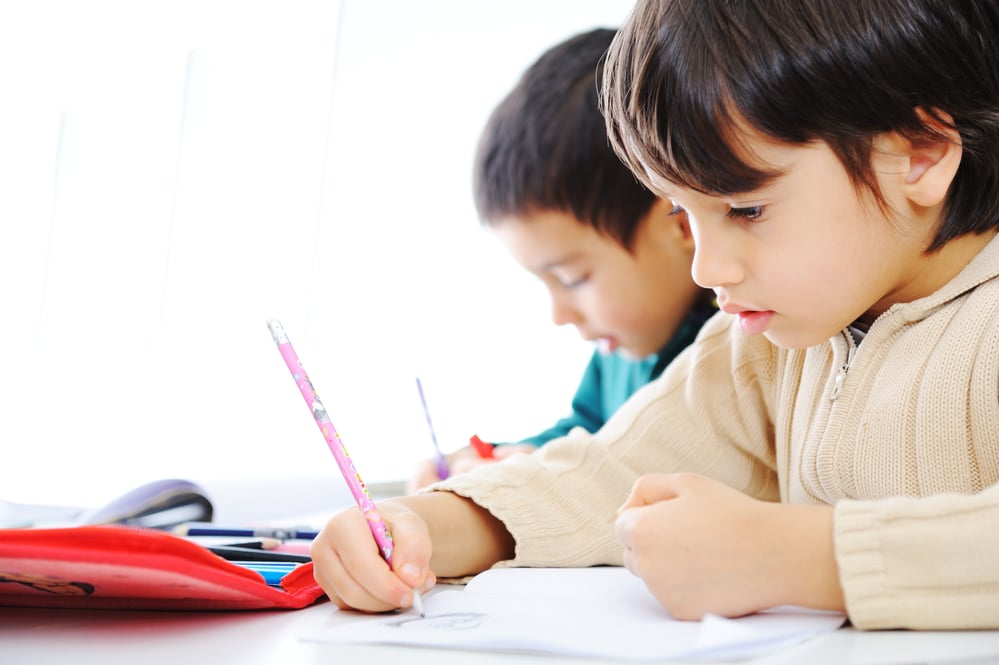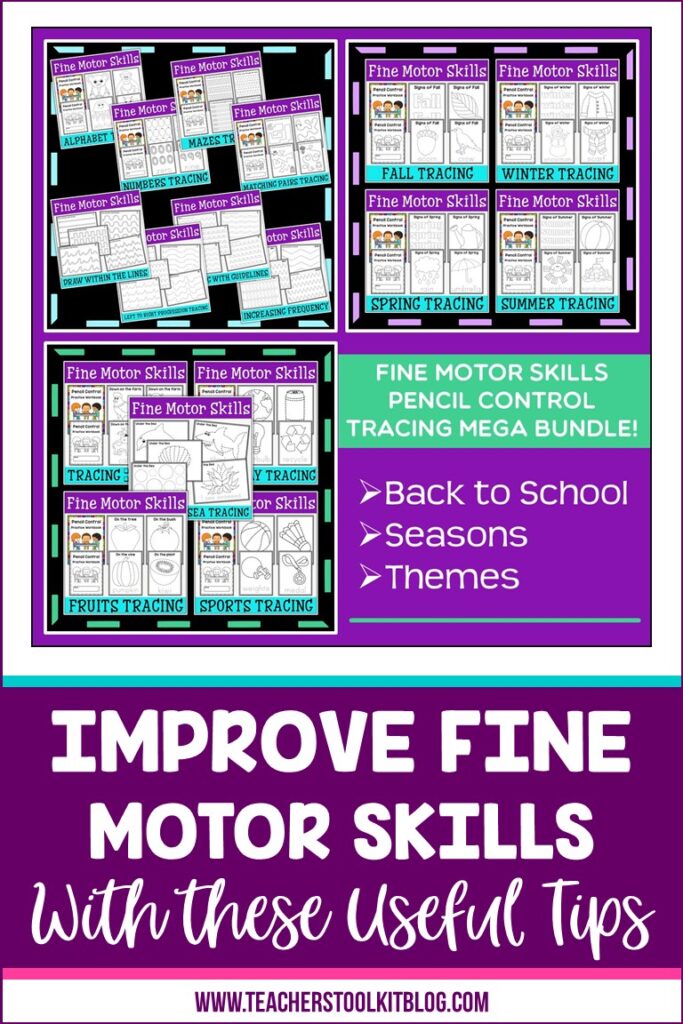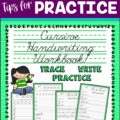We don’t even think about using our hands. Opening packaging, cutting with scissors, buttoning a shirt … these are all very common tasks that require fine motor control. But this skill isn’t something that we’re born with. We have to develop it through practice and repetition. Our young students come to us with varying levels of fine motor ability. Here are some ideas for helping your students to improve their fine motor ability. And check out my earlier blog post on fine motor skills.

What is fine motor control?
Fine motor skills are the ability to make small, precise movements with our hands. We use the small muscles in our wrists and hands during fine motor movements.
If students struggle with this, it will impact their ability to perform many of the everyday tasks we expect them to do in school. Tieing their shoes, using scissors, correctly holding a pencil to write with, and picking up small objects are some tasks that may be impacted if students have poor fine motor skills.
Fun Activities and Easy Tasks
- Painting. Finger painting is always fun for kids because it’s messy. But it can strengthen their manual dexterity and improve eye-hand coordination. Painting with a brush will help them be better able to grasp a pencil.
- Race with rice. All you need for this simple activity is a handful of uncooked rice, small plastic tweezers, and some empty bowls. Place some rice in a bowl and see how fast students can transfer the grains of rice to an empty bowl. Add a little competition to see who can finish first. If rice grains are too small, start with something slightly larger such as pony beads or small pasta.
- Use Play-Dough. Kids use many small muscles in their hands and wrists when they play with Play-Dough. Let them twist it, roll it, and shape it!
- Use paper clips. Picking up a paper clip and sliding it onto a piece of paper takes focus and eye-hand coordination. Colored paper clips are fun to use and are easier to see.
- Eye Droppers, toothpicks, and kitchen tongs. Give your kids some colored water in a bowl and just let them draw it up into the dropper and then squirt it into another bowl. Ask them to pick up small toys with the kitchen tongs, or drop some colored toothpicks on the table and ask them to pick up all the red or blue ones.
Tracing for More Fine Motor Control
Kids love to trace! Take advantage of that and let them work on their fine motor skills by tracing fun pictures, completing mazes, and staying within the lines.
Tracing has major benefits for your students. Not only does it help with fine motor skills, but it also takes focus and concentration and develops visual-spatial skills.
I’ve put together a fun set of 17 different types of tracing activities that will help improve your students’ fine motor control. These are fun and engaging … your kids won’t know they’re practicing!

Doing these types of activities will improve your students’ pencil grip and ready them for the more complex movements and control they’ll need for tasks at higher grade levels.
Do you have a fun activity that you love to use for fine motor control? We’d love to hear about it!


